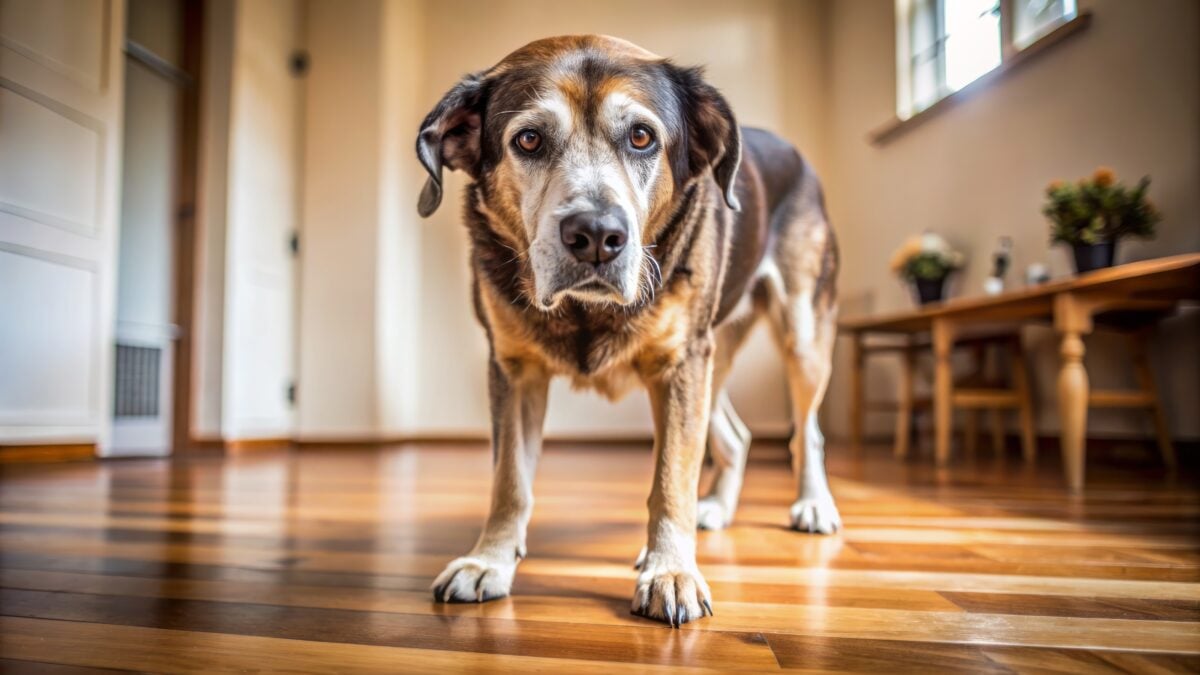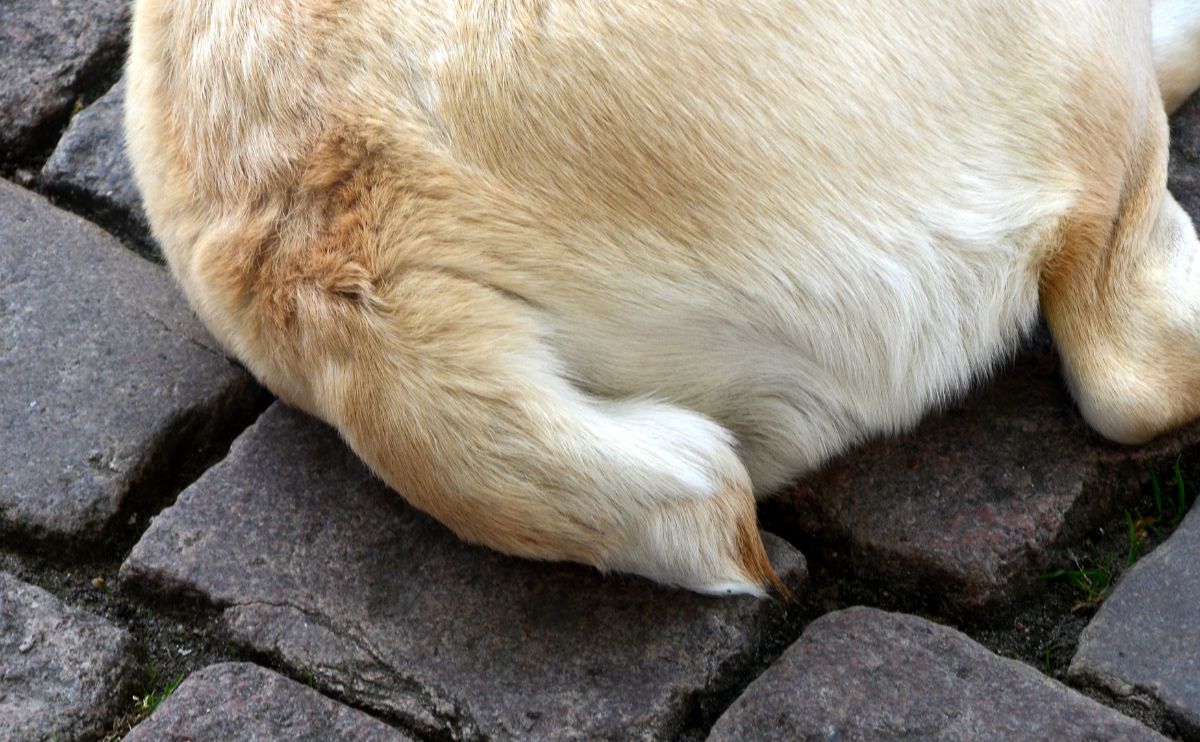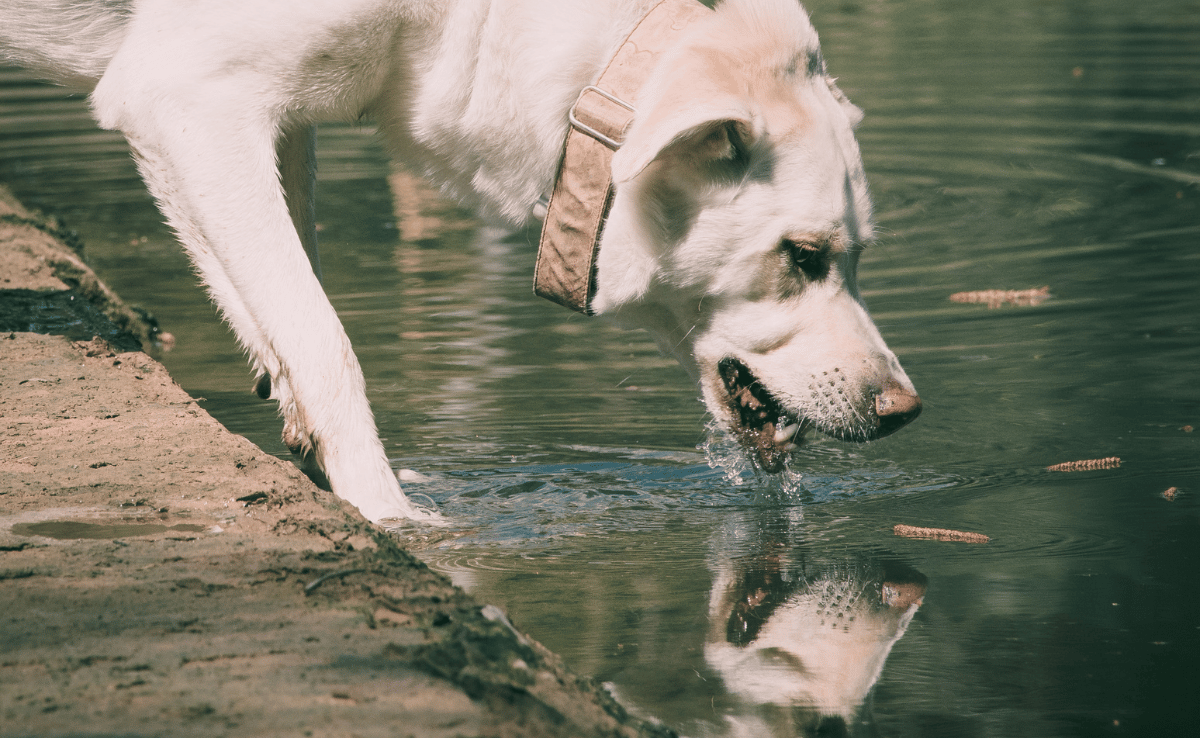Video Games For Doggy Dementia: Do They Really Work?
When you purchase through links on our site, we may earn a commission. Here’s how it works.
Can video games really help slow down doggy dementia?
Table of Contents
When my beloved senior dog, Daisy, started showing signs of confusion and anxiety, I was desperate to find something, anything, that could help. That’s when I stumbled onto something surprising: video games for dogs.
Sounds crazy, right? But what if these digital distractions could actually stimulate your aging pup’s brain and bring back a spark of joy? I decided to try it for myself. Here’s what I found.

What Is Canine Dementia (CDS)?
Canine dementia, also known as Canine Cognitive Dysfunction (CDS), is a progressive neurodegenerative condition that affects older dogs. Much like Alzheimer’s in humans, CDS causes the gradual deterioration of brain function due to aging neurons. It commonly begins around age 9 and is often mistaken for normal aging.
Cognitive dysfunction syndrome occurs when neurons in the brain begin to deteriorate with age. As the neurons start to malfunction and deteriorate, brain function is compromised, including the capacity to process information. This breakdown leads to both behavioral and physical changes in dogs.
Prevalence & Pathophysiology of Canine Dementia
CDS, often called “doggy dementia,” is far more common than most pet parents realize. Studies suggest that 14% to 35% of senior dogs show some form of cognitive decline, and the numbers rise significantly with age.
In fact, research indicates that by age 15, over 68% of dogs may show signs of cognitive impairment, yet many cases go undiagnosed because early symptoms are mistaken for “just getting old.”
What Happens in the Brain?
Scientists have found that dogs with CDS often experience similar brain changes to those seen in humans with Alzheimer’s disease. These include:
- Neuronal degeneration (brain cell death)
- Beta-amyloid plaque accumulation (a protein that disrupts neural communication)
- Reduced glucose metabolism in the brain
- Oxidative stress and inflammation
- Decreased dopamine activity
One 2023 study published in Veterinary Sciences examined post-mortem brain samples from affected dogs and confirmed the presence of abnormal protein buildup, reduced hippocampal volume, and disrupted neural pathways, all of which contribute to memory loss, confusion, and behavioral changes.
These findings support a growing body of evidence that CDS is not just a natural part of aging but a distinct neurodegenerative condition, one that deserves the same level of early detection and supportive care we’d give to human cognitive decline.
Did You Know?
Dogs aged 11–12 have a ~28% chance of showing cognitive decline. Early signs often go unnoticed, but early support can make a major difference.
Recognizing the Signs of Cognitive Dysfunction in Dogs
There are a few common clinical signs of CDS in dogs. These can include:
- Changes in sleep habits, such as staying awake at night, sleeping more during the day, and restlessness at night.
- A decrease in activity levels, an increase in restlessness and aimless pacing, increased aggression, anxiety, irritability, fear, or other unusual behaviors.
- An increase in clinginess or overly avoidant behavior, especially with familiar and favorite people
- Disorientation can occur, especially in very familiar places like the home. It can also include confusion, urinating in unusual places, or staring off into nothing.
- An uncharacteristic lack of response or recognition of familiar commands and people.
- Increase in bathroom accidents inside, such as peeing on walls or having defecation accidents.

Canine Dementia Treatment Options
While there is no cure for CDS, various treatments can help manage symptoms and improve quality of life.
1. Prescription Medication: Selegiline Hydrochloride
Selegiline (Anipryl®) is often prescribed to improve dopamine levels in the brain. Selegiline is currently the only FDA‑approved medication in dogs for CDS. This is not a standalone fix; optimal results occur when medication is combined with enrichment, diet, and lifestyle measures.
2. Diet & Nutritional Supplementation
Nutrient-rich senior dog food and antioxidant-rich fresh food or human-grade diets support brain health.
Studies indicate that dietary interventions can improve cognitive signs in older dogs. A controlled trial showed that a diet enriched with 6.5% medium-chain triglycerides (MCTs) significantly improved all six evaluated CDS sign‑categories within 90 days. Feeding your dog high‑antioxidant foods and brain‑health diets is recommended as part of overall management.
Look for senior‑dog formulas labeled for cognitive support, and discuss specific nutrient‑blend supplements with your veterinarian.
Nutritional supplements like SAM-e, CBD, and antioxidant blends are often used alongside prescription food or home-cooked diets. These compounds help support mitochondrial function, reduce oxidative stress, and may ease anxiety and inflammation linked to CDS.
Supplements can help with many things as our pups age. Learn more about the best joint supplements and those for arthritis. I give my senior pup Daisy CBD dog treats, which help with her body pain and have calmed down some of her dementia issues, like anxiety and aggression.
Always discuss adding supplements to your senior pup’s regimen with your veterinarian first.
3. Lifestyle and Environmental Enrichment
Creating a supportive home environment can make a dramatic difference for a dog with dementia. Consistent routines, safe spaces, and reduced stimulation help manage confusion and anxiety. Just as importantly, interactive brain games, like puzzle toys, training exercises, and touchscreen-based dog video games, are increasingly used to help preserve cognitive function.
Prescription medications and other supportive care can be eligible for reimbursement through pet insurance. To learn more about pet insurance and what your options are, read our pet insurance reviews.
How Mental Stimulation Supports Brain Health in Dogs
Engaging the canine brain is one of the most effective ways to slow cognitive decline. Mental stimulation improves memory, attention, and learning ability, keeping your dog mentally younger for longer.
Physical Activity & Cognitive Health in Older Dogs
A landmark study from the Dog Aging Project, which analyzed data from over 11,500 companion dogs aged 6–18, found a powerful link between physical activity and cognitive health. Dogs that were more active, whether through daily walks, play sessions, or interactive games, had:
- Lower severity of cognitive dysfunction symptoms (estimate = –0.10, p < 0.001)
- About half the odds (OR = 0.53) of meeting clinical criteria for Canine Cognitive Dysfunction (CCD)
In other words, active dogs showed clearer thinking, better memory, and fewer signs of confusion compared to their less‑active peers. While the study was observational (so it doesn’t prove cause and effect), it strongly indicates that regular movement and play may protect the aging brain, much like in humans.
Why Video Games Can Help With Dementia
Video games stimulate the brain by engaging cognitive functions like memory, recognition, reaction time, and problem-solving. This kind of mental activity has been shown to benefit humans and is increasingly explored for its potential in treating both human and canine dementia.
The benefits aren’t limited to electronic games—puzzles, card games, and even virtual reality can offer similar stimulation. These games may seem like simple fun, but they help keep the brain active and engaged.
While more research is needed to determine the full impact of video games on dementia treatment, early findings are promising. Scientists and pet tech innovators alike are increasingly focusing on how interactive play can support brain health in aging populations, both human and canine.
Can Dogs Really Play Video Games?
With touchscreen technology and positive reinforcement, dogs can interact with games designed just for them. Though they won’t be playing Fortnite or Candy Crush anytime soon, studies and real-world applications have shown that dogs are capable of engaging with simple digital games.
A recent study at Eckerd College demonstrated this with a rescue dog named Orlo, who learned to play a nose-controlled game. Dogs love to please and can be motivated by sounds, animations, and treats.
Watch Orlo in action in the video below:
Interactive Technology & Cognitive Stimulation in Dogs
In a pioneering study from Vetmeduni Vienna, researchers trained senior dogs to play touchscreen-based games resembling “dog sudoku.” The dogs were taught to use their noses or paws to interact with on-screen puzzles, and most quickly adapted to the digital format, even those who had never used a screen before.
The results showed that older dogs not only learned to use touchscreen devices but also enjoyed the cognitive challenge, demonstrating signs of engagement, persistence, and positive affect. This supports the idea that digital enrichment tools can be both mentally stimulating and emotionally rewarding for aging dogs.
Additionally, a 2024 article in Frontiers in Veterinary Science highlighted emerging research focused on using digital cognitive tests, touchscreen interfaces, and even biometric sensors to assess and support canine cognition. These tools could one day help with the early detection of dementia in dogs, much like computerized testing is used in humans.
Meet Joipaw: The First Dog Video Game Console
Joipaw is a UK-based start-up that has been working on a video game console for dogs for the last few years. The idea is the brainchild of Dersim Avdar, a dog parent who wanted to give his pup more to do than watch television or eat a bowl of treats when he was not home. He was inspired by research that showed dogs with dementia could benefit from simple games and wanted to find something that could keep his pup at top mental capacity.
What Is Joipaw?
The Joipaw video game console is designed specifically for dogs. It is much different than most other “dog video games,” which use human devices like tablets and phones. While these can be effective, they were not originally designed for non-human players with claws, big teeth, and a tendency to drool.
How Does Joipaw Work?
Joipaw is designed with canine users in mind, blending smart tech with physical durability to make gameplay simple and rewarding for dogs.
- Adjustable touchscreen console set at pup-friendly height
- Saliva- and shock-resistant screen that can handle drool and paw taps
- Dog-friendly games, like a version of “Whack-A-Mole”
- Built-in treat dispenser to reward interaction
- Peanut butter training trick used to spark initial interest
The console is still in development, but dog parents can follow Joipaw’s progress online and join the waitlist to be among the first to try it when it launches.
See Joipaw in Action (Video)
You can see Joipaw and how it works in this video below.
Other Dog-Friendly Video Game Options
If you can’t wait for Joipaw’s public release, there are other options:
- JollyPet (also called Jolly Dog): Available for Android, iOS, and PC. Features critters your dog can tap with their nose or paw. The app is free, with in-app purchases.
- Games for Dogs: A simple tapping game designed to work on touchscreen devices.
JollyPet (aka Jolly Dog)
JollyPet is a pet-specific app available on iOS, Android, and PC that features critters darting across the screen for your dog to chase and “catch.” It’s a great entry-level game that encourages interaction through nose or paw taps.

The app is free with optional upgrades and works best on larger screens like tablets. With a little practice and maybe some treat incentives, it can become a fun enrichment tool, especially for senior dogs who enjoy slower-paced activities.
My Experience: Playing JollyPet With My Senior Dog Daisy
A first-hand look at how a simple game helped my dog engage and reconnect.
When I first downloaded JollyPet, I wasn’t sure what to expect. My 12-year-old dog, Daisy, isn’t one to chase apps. But after a few trial sessions and a little peanut butter and cheese encouragement, she began tapping at critters with her nose.
The game is very basic, but Daisy now perks up whenever she sees the tablet. It’s a bonding experience more than anything, and while I can’t say it’s cured her dementia, it’s absolutely made her more alert and engaged.

Game for Dogs
One of the original pet touchscreen apps, Games for Dogs features small critters (like bugs or dots) scurrying across the screen. Dogs are encouraged to “catch” them by tapping with a paw or nose. The visuals are simple but effective. There are no sounds or rewards built in, so this game works best when paired with owner interaction and treats.
Which Video Game Is Right for Your Pup? Let’s Break It Down
With a growing number of digital enrichment options for dogs, it can be tough to know which game is best for your furry friend. Whether you’re looking for a full-featured console like Joipaw or a simple tap-and-chase app for your tablet, this side-by-side comparison will help you sniff out the right fit.
| Feature | Joipaw | JollyPet (aka Jolly Dog) | Game for Dogs |
|---|---|---|---|
| Platform | Custom console | App (iOS/Android/PC) | App (iOS/Android) |
| Designed for Dogs | Yes, built for nose/paw interaction | Yes, pet‑specific visuals/sounds | Yes, optimized for dogs, includes sound feedback |
| Treat Dispenser | Yes — built‑in dispenser | No | No |
| Reward System | Treats + visual/audio feedback | Visual + audio feedback | Visual + audio feedback |
| Gameplay Type | Touchscreen games (e.g., Whack‑a‑Mole) + hardware | Critter‑catching on screen | Simple bug‑chase/tap game designed for pet interaction |
| Availability | Pre‑order / in development | Free with in‑app purchases | Free or low‑cost app |
Common Questions About Video Games for Dogs
If you’re curious whether dogs can really benefit from video games, or just wondering how to get started, these answers will help you understand how digital enrichment fits into senior dog care. If you don’t see yours, let me know in the comments.
Do video games really help dogs with dementia?
Yes, while not a cure, video games can provide valuable mental stimulation, which is key to slowing cognitive decline. Just like puzzle toys or scent games, digital interaction exercises the brain. Early studies and anecdotal reports show increased engagement and responsiveness in senior dogs using touchscreen-based games.
Can dogs really understand or play video games?
Dogs won’t be playing like humans, but they can absolutely interact with games designed for them. With proper motivation (like treats or peanut butter) and repetition, many dogs learn to tap at critters or shapes on a screen. Games like Joipaw or JollyPet are specifically made to work with a dog’s instincts and physicality (like using their nose or paw).
What kind of devices can my dog use to play?
Most pet-friendly games work on touchscreen tablets or smartphones. Tablets are ideal, especially for larger dogs, because they give more space to interact. Joipaw, on the other hand, is building a custom, dog-proof console that’s drool-resistant and includes a treat dispenser.
How do I get my dog interested in a screen?
Start slow. Use high-value rewards like treats or smear a little peanut butter near the action on the screen. Gently guide your dog’s nose or paw at first. Keep sessions short, fun, and low-pressure — just like teaching a new trick.
Is it safe for my dog to touch a tablet?
Yes, but be cautious. Use a screen protector and consider a rugged case to guard against paws or drool. Always supervise your dog while they’re playing, and never leave them alone with your device.
Are there video games with built-in rewards?
Joipaw is currently the only game system for dogs that includes a built-in treat dispenser. Other apps like JollyPet and Game for Dogs don’t have physical rewards, so you’ll need to manually offer treats or praise when your dog interacts correctly.
Can playing games replace walking or physical activity?
No, digital games are a supplement, not a replacement. Dogs still need daily physical exercise, but games can fill in when mobility is limited or the weather prevents outdoor time. For senior dogs, especially, a mix of mental and physical activity is ideal.

Is It Doggy Dementia? Try the At-Home DISHAA Screening
Worried your dog might be showing signs of cognitive decline? One tool many veterinarians use to guide early conversations about canine dementia is called the DISHAA Assessment. It’s not a formal diagnosis, but it can help you track behavioral changes and decide when it’s time to talk to your vet.
DISHAA stands for six key behavior categories:
- Disorientation – Gets lost in familiar places, stuck behind furniture, stares into space
- Interaction Changes – Less interest in people/pets, sudden fear or irritability
- Sleep-Wake Cycle – Restless or vocal at night, naps more during the day
- House Soiling & Memory – Accidents indoors, forgets housetraining or basic commands
- Activity Level – Less playful, repetitive behaviors like circling or licking
- Anxiety – More nervous, startled by routine sounds, clingier than usual
Tip: Many pet owners print or screenshot this list to track changes over time. Bring it to your vet for a clearer picture of what’s going on.
Additional Ways to Stimulate Aging Pups
Keeping our pups active as they age can be a challenge. While daily walks and hikes are excellent exercises, as our pups enter their senior years, mobility issues can prevent them from taking those long, healthy walks.
In addition to digital games, your senior pup can benefit from:
- Interactive Puzzle toys
- Hide-and-seek or scent-finding games
- Obstacle courses adapted for limited mobility
- Gentle massage and tactile stimulation
- Learning new low-impact tricks (like “touch” or “spin”)
Along with trying video games, there are other activities you can try. We review some of the best brain games for dogs and the best interactive dog toys to keep your pet mentally stimulated. Games where your pup has a problem to solve, like finding something based on scent or playing hide and seek, can keep them mentally engaged. Giving them a gentle doggy massage can also help keep your pup engaged as they age. We cover care needs and more in our guide on caring for senior dogs.
In the end, it’s not about high scores or fancy tech, it’s about giving our dogs one more reason to smile, to connect, and to stay curious just a little longer. If a game can bring back even a flicker of joy or spark in your senior pup’s eyes, then it’s more than just play… it’s love in motion.
Doggy Gamers Unite – Share Your Experience!
Have you ever played video games with your dogs? Which one is your pup’s favorite? I’d love to hear about your experience and doggy video game-playing tips in the comments.



